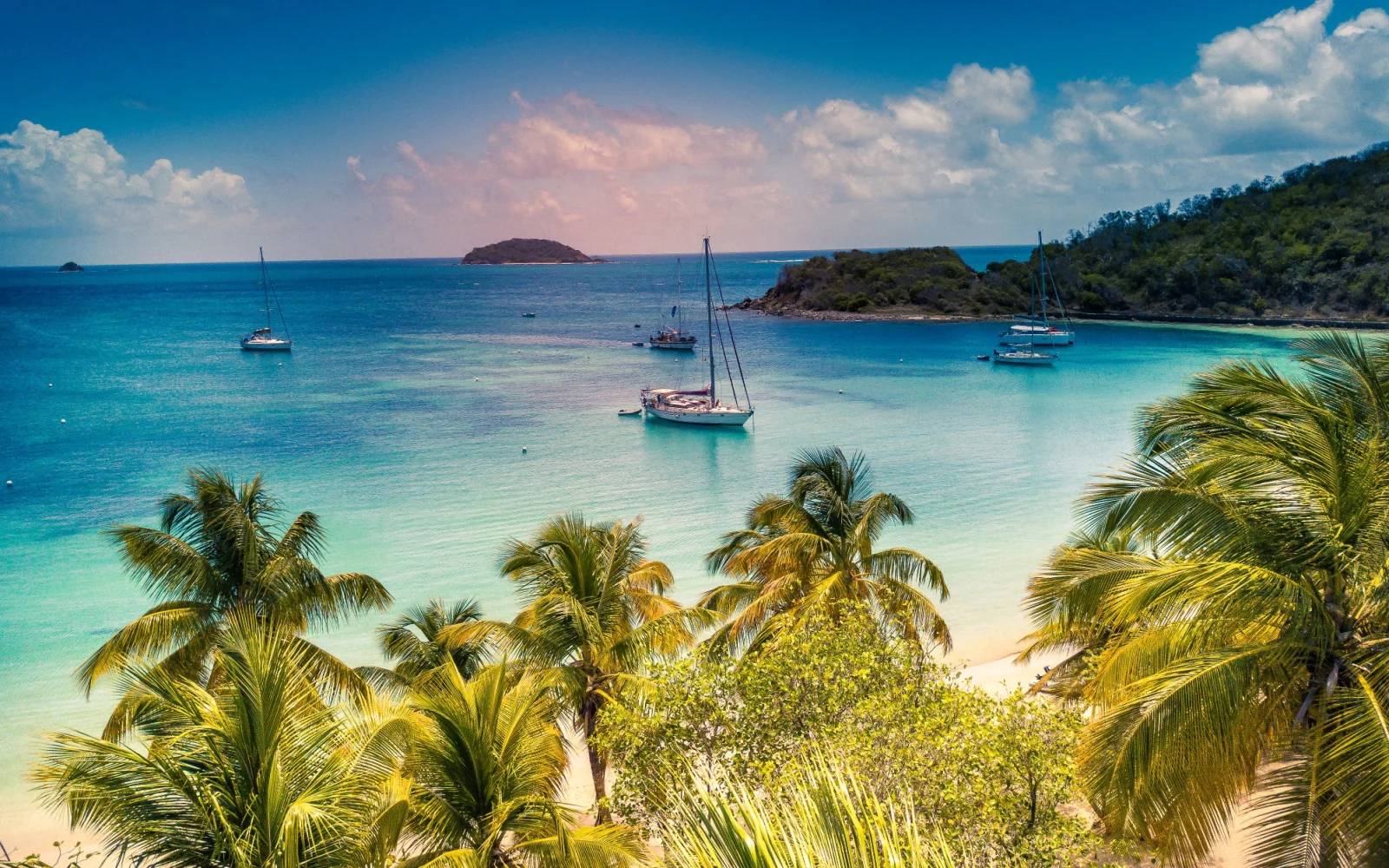What's the best time to visit St. Vincent?
The best time to visit St. Vincent is during the dry season from December to May, when cooler temperatures around 79°F and minimal rainfall create ideal conditions for outdoor activities. This period is perfect for hiking, scuba diving, and sailing due to clear skies and favorable winds. Despite being the high season, the island remains pleasantly uncrowded.
The island country of St. Vincent and the Grenadines is a beautiful getaway in the Caribbean thanks to its unspoiled nature. Visitors to St. Vincent can enjoy miles of pristine sandy beaches such as Salt Whistle Bay Beach.
It also boasts lush tropical interiors with challenging hiking trails. The hike up the La Soufriere volcano is a route that offers great views — but is not for the faint-hearted. Plus, make sure that you stop in the capital Kingstown to take in the quaint cobblestoned streets and fun cultural events.
St. Vincent has a lot to offer visitors, and people are fast catching on that it is one of the most beautiful islands in the Caribbean. Keep reading to learn more about the best time to visit.
Overall Best Time to Visit St. Vincent
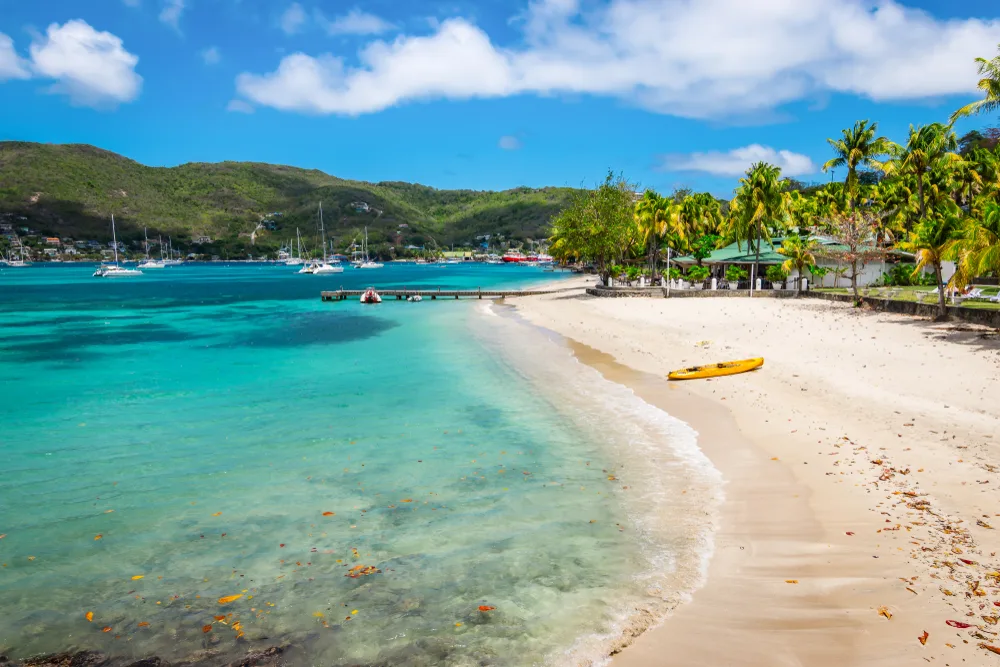
Nancy Pauwels/Shutterstock
The best time to visit St. Vincent is during the dry season, from December to May, when the weather is the best for exploring the island.
St. Vincent, like the rest of the Caribbean, has a tropical climate. Temperatures are either warm or downright hot throughout the year. From December to April, temperatures are a bit cooler than during the rest of the year, usually reaching around 25-26 degrees Celsius (77-79 degrees Fahrenheit) during the day.
The variations in precipitation are the most important factor when deciding when to visit St. Vincent since the temperature doesn’t change much. December to May is the region-wide dry season.
Like most Caribbean islands, St. Vincent receives the least amount of rain during this time. If you visit then, you can expect mostly sunny weather. Obviously, if you’re visiting the beach, you want to visit when there is mostly sunny weather.
It’s pretty hard to work on your tan when there is rain all day! However, there are other reasons it’s better to visit St. Vincent when the weather is drier.
This is one of the best islands in the Caribbean for hiking thanks to the La Soufriere volcano, but it’s only worth hiking in the dry season, when trails aren’t muddy, and you have clearer views.
The dry season is also the best time to visit for water-based sports. St. Vincent is considered one of the best scuba diving locations in the Caribbean thanks to its vibrant marine life and clear waters. Visibility is best during the dry season, when there isn’t rain or wind to mess up the visibility.
This season is also a good time to go sailing, since there are fewer storms and rain. Plus, the trade wind patterns around St. Vincent and the Grenadines mean that the winds are most favorable for sailing around this time.
December to April is the high season on the island, so prices will be at their highest. However, it never gets too crowded.
Cheapest Time to Visit St. Vincent
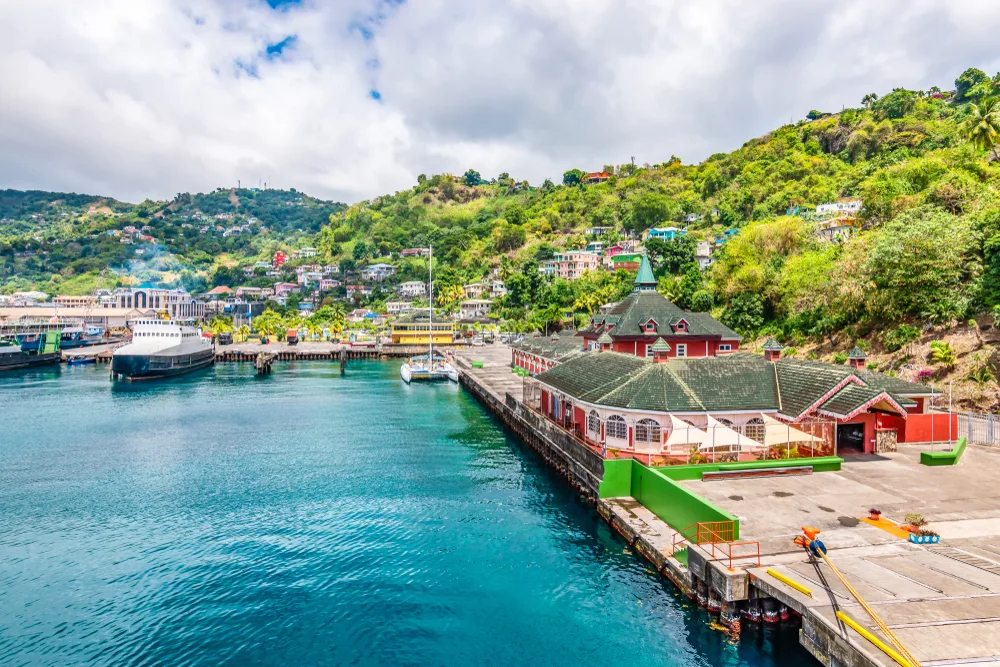
Nancy Pauwels/Shutterstock
The cheapest time to visit St. Vincent is during the off-season, from May to November, when you can find deals on accommodation and transportation.
May to November is the island’s rainy season. As the weather gets worse, visitor numbers go down, and so do prices. Many hotels, including high-end resorts, offer discounts during the low season.
You can find discounts of 15-20% during the quieter season, allowing you to save a bit on hotel costs. Another major expense you’ll have to pay when visiting St. Vincent is the flight. During the rainy season, flights are usually more affordable.
The least expensive months to fly are September and October, which are two of the rainiest months on the island. Since fewer tourists want to visit, you can find more affordable flights.
The lower demand for tourism can help you save money on activities such as tours and excursions. During the low season, businesses may be more willing to give you discounts, and some hotels may offer package deals with excursions included.
Just keep in mind that no matter when you visit, St. Vincent is one of the more expensive places to visit in the Caribbean. It caters to a luxury clientele, and most expenses are priced accordingly.
Least Busy Time to Visit St. Vincent
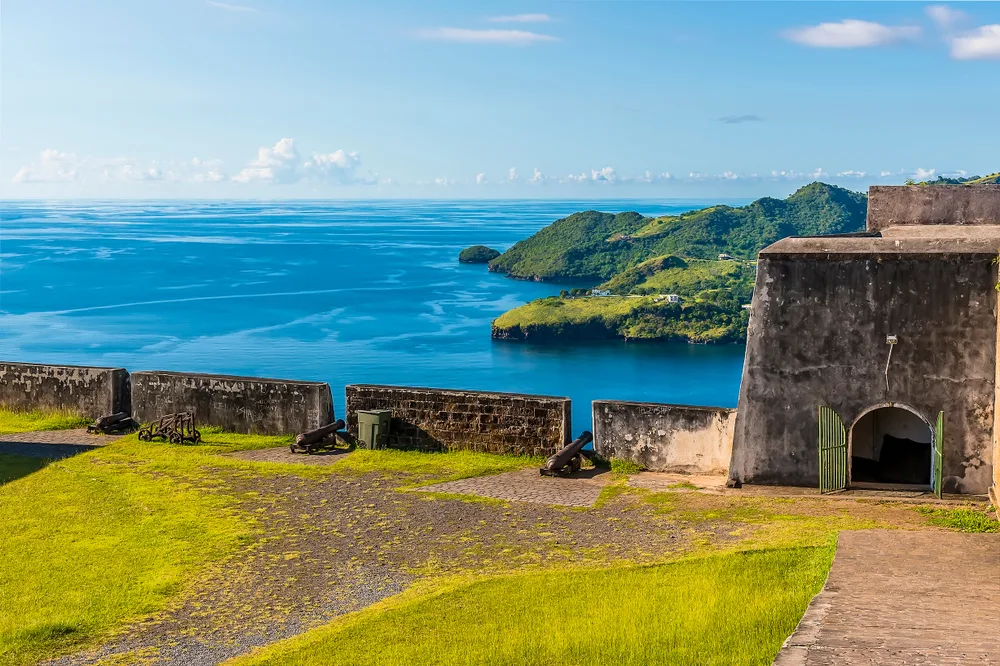
Nicola Pulham/Shutterstock
The least busy time to visit St. Vincent is during the transition from the dry into the rainy season, in May and June. May and June are not the least busy months in absolute terms in St. Vincent.
However, they are the best months to visit if you want a combination of fewer crowds and decent weather. May marks the beginning of the rainy season, and showers are more frequent than they are in the previous months.
However, the really intense storms don’t get started until July and August. In May and June, there are showers, but they are mostly refreshing bouts of rain in the late afternoon.
You can still work on your tan early in the morning. There is a distinct drop in visitors as soon as the dry season ends and as soon as spring break season ends in April. That means you won’t have to fight for a spot on the beach anymore.
It’s a lot easier to enjoy the gorgeous nature of St. Vincent and the surrounding islands when you aren’t surrounded by crowds. Plus, May and June bring some of the best festivals the island experiences all year.
You can party in the streets with the locals during the Vincy Mas Carnival in June/July, or watch the Canouan Regatta, a favorite local sailing race held in May/June. You’ll get a taste for the local culture as residents relax after a long, stressful tourist season.
Worst Time to Visit St. Vincent
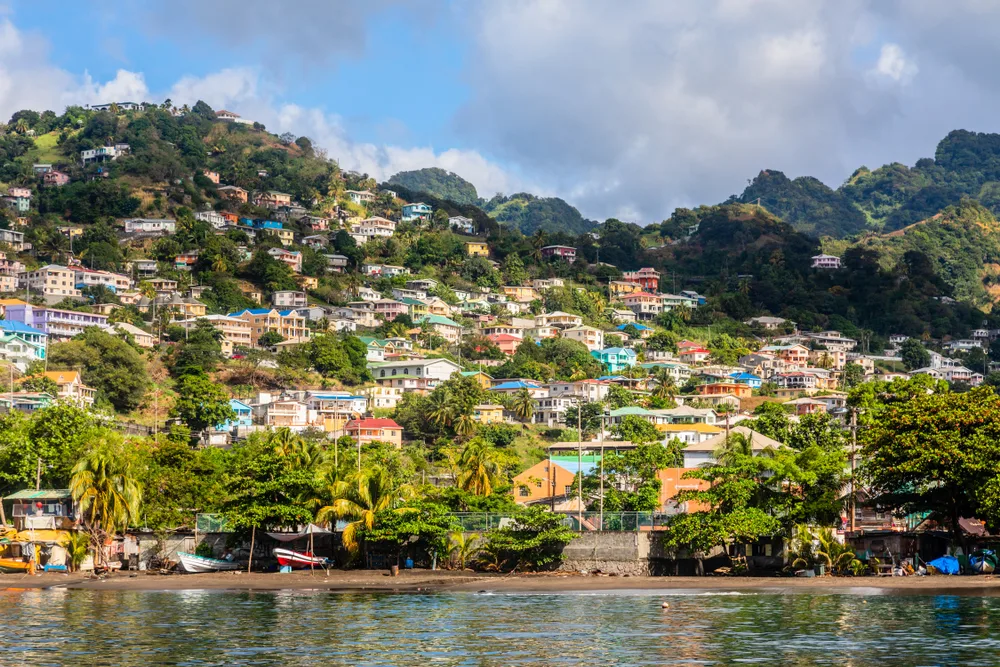
Vadim_N/Shutterstock
The worst time to visit St. Vincent is during the peak of the rainy season, from August to October, since that is when the island experiences the worst weather.
Nobody wants to spend their beach vacation trapped in their hotel room, waiting for the rain to pass, no matter how gorgeous that hotel room may be. That may be exactly what happens to you if you visit St. Vincent during the latter half of the rainy season.
September, October, and November are the rainiest months of the year in St. Vincent. October receives the most rain, averaging 309 mm (over 12 inches) all month.
This heavy rain makes inland hiking trails and roads muddy messes and messes up your beach experience as well. Hurricane season peaks from mid-August to early October, so there is a high chance of tropical storms battering St. Vincent during this time.
The island is south of the worst-hit areas of the Caribbean, so it usually avoids the worst of the storms. Still, tropical storms and even hurricanes are possible during this time. They can cause flooding, power outages, and structural damage.
There are some benefits to visiting during this time. If you are willing to risk the bad weather, you can get great deals on hotels. Plus, late October has fun festivities around St. Vincent’s Independence Day (October 27th).
Frequently Asked Questions

mbrand85/Shutterstock
Here are a few other questions you may want to ask about visiting St. Vincent:
When is the best time to visit St. Vincent?
The best time to visit St. Vincent is during the dry season, which is from December to April. This season has the best weather.
When should I go to St. Vincent and the Grenadines?
You should go to St. Vincent and the Grenadines when the weather is nice since so many activities happen outdoors. That means going during the dry season or the beginning of the rainy season, when it isn’t too rainy yet.
Is St. Vincent expensive to visit?
Yes, St. Vincent is expensive to visit. Most tourists that visit are high-end travelers, so amenities for visitors are more expensive, but there are more budget options in recent years.
What seasons does St. Vincent have?
St. Vincent has two major seasons, the dry season and the rainy season.
Does St. Vincent have beaches?
Yes, St. Vincent has many beautiful beaches. There are all kinds of beaches, from sandy beaches to volcanic beaches.
So, What’s the Best Time to Visit St. Vincent?
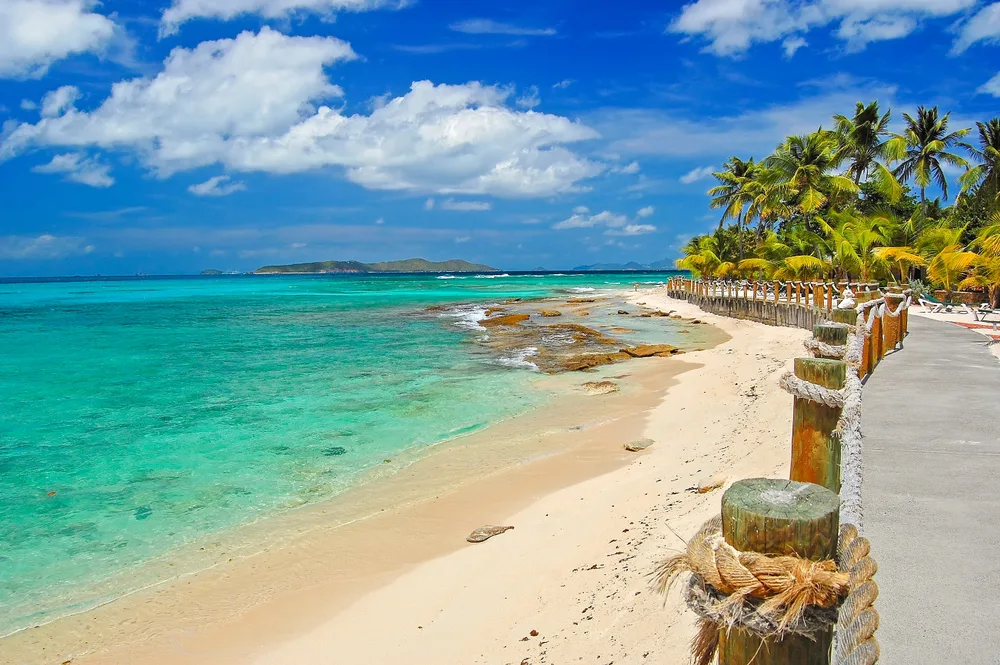
Pawel Kazmierczak/Shutterstock
The best time to visit St. Vincent for great weather, great sailing, and excellent outdoor adventures is during the dry season, from December to April. The rainy season brings showers and sometimes storms, but also discounts and fewer crowds. Visit in May or June for discounts before the worst of the rain starts.
So, with so much to see and do and plenty of amazing times to visit, what are you waiting for — book your trip today and experience for yourself all that St. Vincent has to offer. Happy travels!



